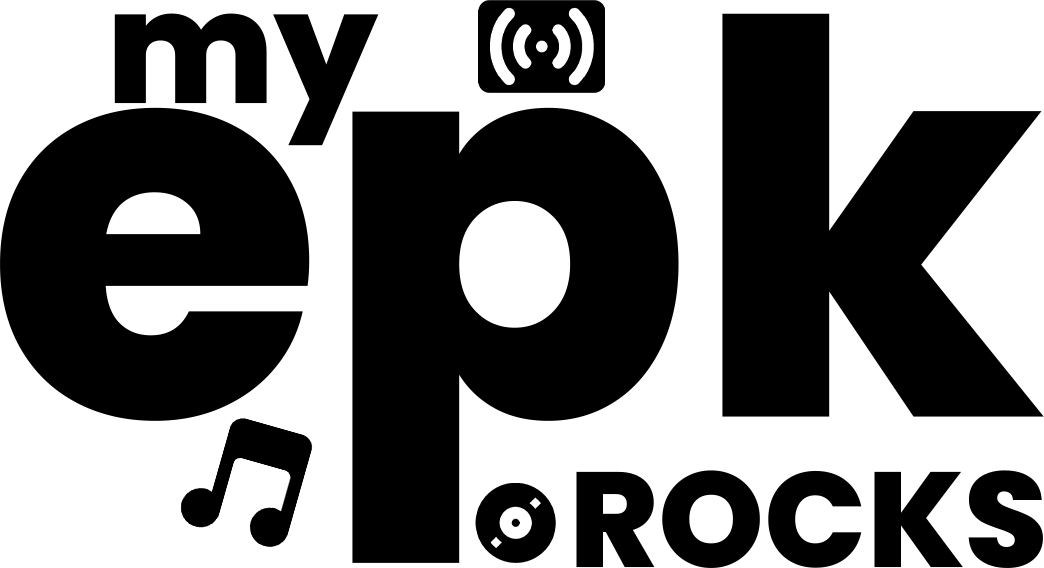Alright, buckle up, music makers! Whether you’re fresh off the garage band bus or a seasoned vet with a few tours under your belt, this is your no-nonsense, down-to-earth guide to getting your music heard in the wild, wild west of the modern music industry. We’re going to dive deep, ditch the industry jargon where we can, and arm you with practical strategies, no matter where you are on your musical journey. This ain’t a fairy tale, but it IS a roadmap to carving out your own piece of the music pie.
The Ground Rules: A Level Playing Field (Sort Of)
Look, let’s be real. The music industry is a beast. It’s constantly evolving, flooded with talent, and yes, sometimes feels rigged. But the good news is that the internet has democratized a lot of it. You no longer need a massive record label to get your music out there. But, you do need a solid plan and a whole lot of hustle. Think of this as your survival guide.
Part 1: New Artist Essentials – From Zero to “Hello, World!”
Okay, so you’ve got the music. Awesome! But that’s just the first note. Now you need to build a foundation. Consider this your Music Career 101.
1. Define Your Brand: Who Are You, REALLY?
This is where we go beyond the music. It’s about crafting a cohesive identity that resonates with your target audience. Ask yourself:
- What kind of music do you make (duh!) and what are its key influences? Get specific. “Indie rock” is broad. “Indie rock with a 90s grunge meets modern synth-pop twist” is much better.
- What are your values? Are you passionate about social justice? Environmentalism? Sharing positive vibes? Authenticity is key here. Don’t pretend to be something you’re not.
- Who is your ideal listener? Age, interests, where they hang out (online and IRL). This is your “target persona.” Knowing them intimately will inform everything you do.
- What’s your visual aesthetic? Album art, website design, social media posts – everything should be consistent and reflect your brand. Think about colors, fonts, and overall vibe. Mood boards on Pinterest can be surprisingly helpful for this.
Think of artists like Billie Eilish and how well they’ve used the power of branding. This article explains how she uses branding to her advantage and how it helps solidify her success.
2. Build Your Online Presence: Your Digital Home Base
This is crucial. Your website and social media are your storefronts.
-
Website: Essential! Ditch the generic, free template. Invest in a clean, professional-looking site. It doesn’t have to be fancy, but it should be easy to navigate and showcase your music, bio, tour dates (if you have them), and contact information. Platforms like Squarespace, Wix, and WordPress (with a good theme) make this relatively painless.
-
Social Media: Choose your battles. Don’t try to be everywhere at once. Focus on the platforms where your target audience spends their time.
- Instagram: Visuals are king/queen. High-quality photos and videos are a must. Engage with your followers. Use relevant hashtags. Instagram reels is key!
- TikTok: Short-form video is dominating. Get creative, show your personality, and use trending sounds (but put your own spin on them!).
- Facebook: Still relevant for some demographics, especially older audiences. Use it for announcements, events, and engaging with your fan base.
- YouTube: Host your music videos, behind-the-scenes content, and live performances. Optimize your videos with relevant keywords.
- Spotify for Artists: Claim your profile! This is where you can manage your artist profile, track your stats, and pitch your music to Spotify’s editorial playlists. (Spotify for Artists Help)
-
Email List: Don’t underestimate the power of email! Offer a free download, exclusive content, or a discount to incentivize people to sign up. This is your direct line to your fans. Services like Mailchimp and ConvertKit make email marketing manageable.
3. Release Your Music: Get It Out There!
Gone are the days of needing a record label to distribute your music.
- Digital Distribution: Services like DistroKid, CD Baby, and TuneCore will get your music on all major streaming platforms (Spotify, Apple Music, Amazon Music, etc.). Do your research and choose one that fits your budget and needs. (Distrokid vs CD Baby vs Tunecore)
- Physical Copies (Optional): Vinyl and CDs are making a comeback, but they’re not essential for new artists. If you do decide to press physical copies, consider a limited run to create buzz.
4. Play Live (Even if it’s Virtual): Connect with Your Audience
- Local Gigs: Start small. Open mic nights, coffee shops, bars, and local venues are great places to gain experience and build a following.
- Livestreaming: Platforms like Twitch, YouTube, and Facebook Live make it easy to perform for a virtual audience. Promote your streams in advance and interact with your viewers.
5. Network, Network, Network: Build Your Tribe
- Connect with other musicians: Attend local shows, jam sessions, and music industry events.
- Reach out to bloggers, podcasters, and radio stations: Submit your music for review or airplay. Be polite, professional, and persistent.
- Engage with your fans: Respond to comments, messages, and emails. Show them that you appreciate their support.
Part 2: Seasoned Artist Strategies – Leveling Up Your Game
So, you’ve been around the block. You’ve got a fanbase, some releases under your belt, and maybe even a few minor successes. Now it’s time to refine your strategy and reach new heights.
1. Re-Evaluate Your Brand: Stay Relevant and Authentic
The music industry changes fast. Make sure your brand is still resonating with your audience.
- Analyze your data: Look at your website analytics, social media insights, and streaming stats to see what’s working and what’s not.
- Ask for feedback: Survey your fans or host a focus group to get their opinions on your music, branding, and overall direction.
- Evolve your sound: Don’t be afraid to experiment and try new things. But stay true to your core identity.
2. Optimize Your Online Presence: Turn Visitors into Fans
- Website Audit: Is your website still current and user-friendly? Update your content, improve your design, and make sure it’s mobile-friendly.
- Social Media Strategy: Focus on the platforms that are driving the most engagement. Experiment with different types of content (videos, stories, live streams) and use analytics to track your results.
- SEO (Search Engine Optimization): Make sure your website and social media profiles are optimized for search engines. Use relevant keywords in your content and descriptions. This is vital for ranking higher in searches!
3. Elevate Your Music Releases: Go Beyond Basic Distribution
- Strategic Release Planning: Don’t just drop a song and hope for the best. Plan your releases carefully, building anticipation with teasers, pre-saves, and promotional campaigns.
- Collaborations: Working with other artists can expose you to a new audience. Choose collaborators who complement your style and share your values.
- Sync Licensing: Get your music placed in films, TV shows, and commercials. This can be a lucrative source of income and expose your music to millions of viewers. (Sync Licensing Guide)
- Patreon or other membership platforms: Giving your super-fans access to exclusive music and merch is a great way to monetize their devotion to you.
4. Tour Smarter, Not Harder: Maximize Your Impact
- Targeted Touring: Don’t just book gigs randomly. Focus on markets where you have a strong fanbase or where you think you can attract new fans.
- Strategic Partnerships: Team up with other artists or promoters to co-headline shows and reach a wider audience.
- VIP Experiences: Offer exclusive experiences to your fans, such as meet-and-greets, backstage passes, or private performances.
5. Build Relationships: The Power of Connection
- Media Outreach: Cultivate relationships with journalists, bloggers, and radio programmers. Send them your music, offer exclusive interviews, and attend industry events.
- Industry Mentors: Seek advice from experienced musicians, managers, or producers. Their insights can be invaluable.
- Fan Engagement: Go above and beyond to connect with your fans. Respond to their messages, remember their names, and make them feel like they’re part of your journey.
The Common Thread: Consistency and Persistence
No matter where you are in your music career, consistency and persistence are key.
- Be Consistent: Regularly release new music, update your website and social media, and engage with your fans.
- Be Persistent: Don’t get discouraged by setbacks. Keep creating, keep promoting, and keep learning.
- Embrace the Grind: The music industry is a marathon, not a sprint. Be prepared to work hard, stay focused, and never give up on your dreams.
Essential Tools and Resources:
- Music Distribution: DistroKid, CD Baby, TuneCore
- Website Building: Squarespace, Wix, WordPress
- Email Marketing: Mailchimp, ConvertKit
- Social Media Management: Hootsuite, Buffer
- Music Production Software: Ableton Live, Logic Pro X, Pro Tools
- Playlist Submission: SubmitHub, Groover
Final Thoughts: Stay Authentic, Stay Hungry
The music industry is constantly evolving, but one thing remains constant: the power of authentic connection. Be true to yourself, create music that you’re passionate about, and connect with your audience on a genuine level. Stay hungry, keep learning, and never stop pushing yourself to grow. The world needs your music. Now go out there and make it happen!
Alright, go forth and make some noise! And remember, this is just a starting point. Do your research, experiment, and find what works best for you. The most important thing is to keep creating and keep connecting with your audience. Good luck!


